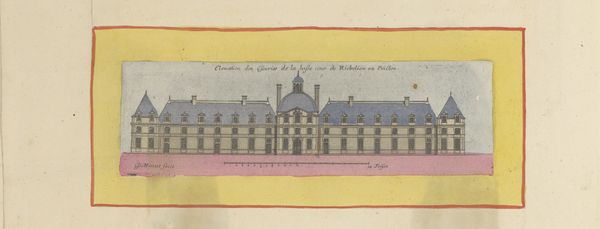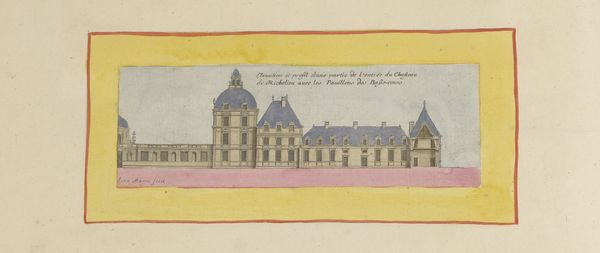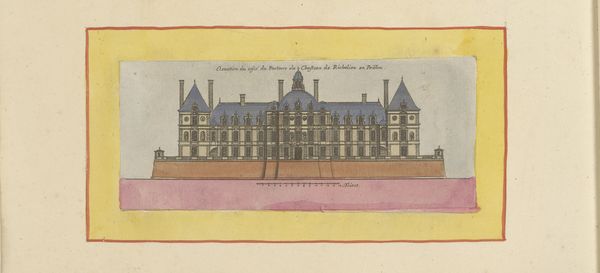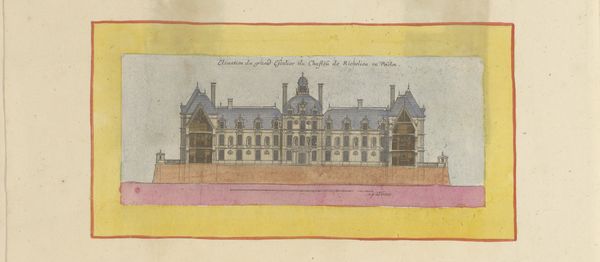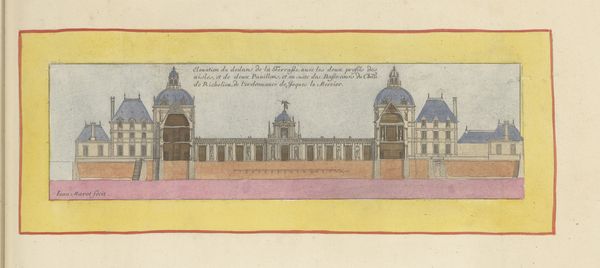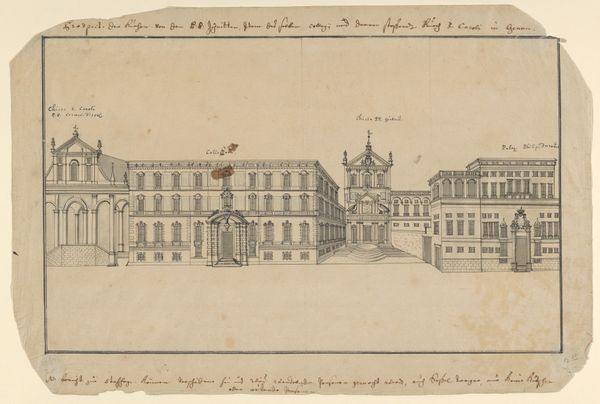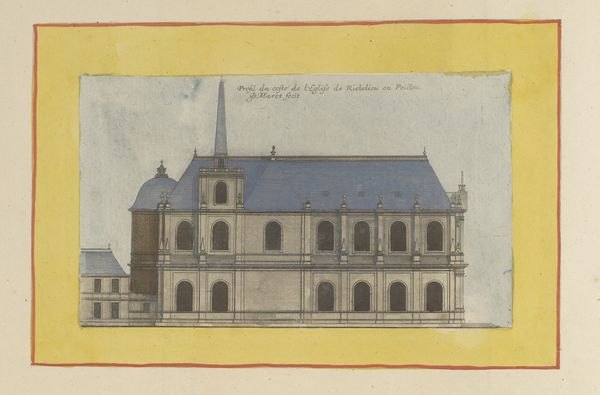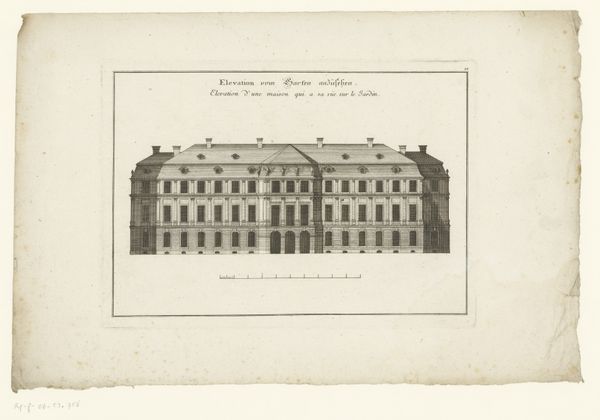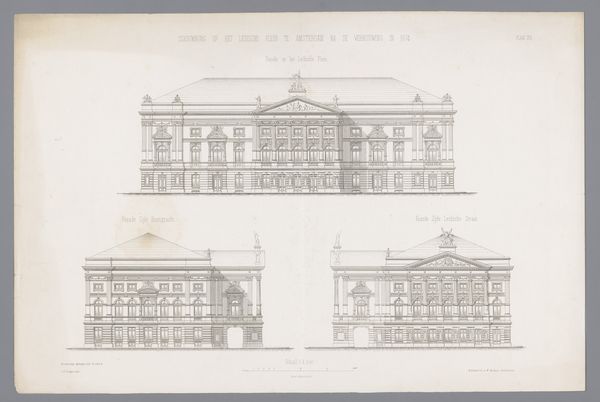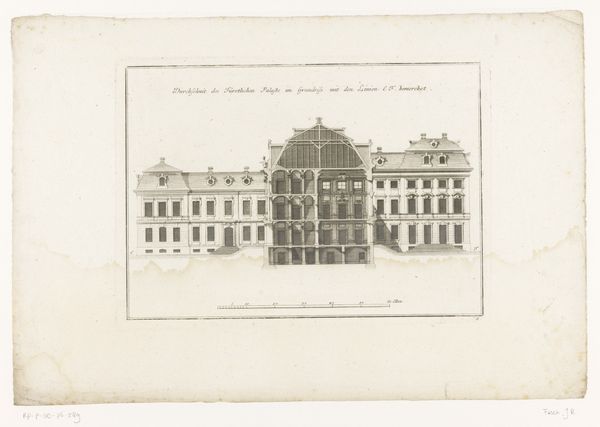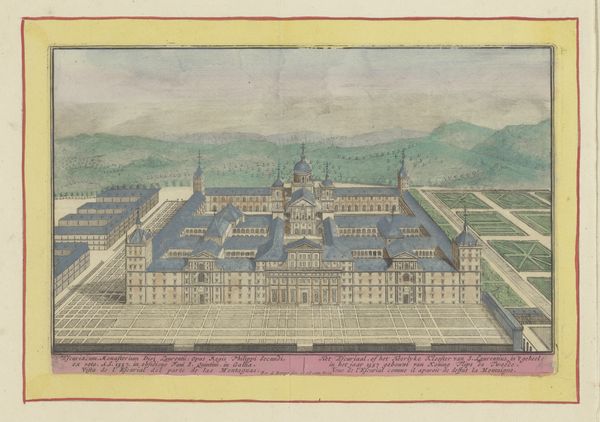
Gezicht op de gevel van het kasteel van Richelieu gezien vanaf het centrale plein 1629 - 1679
0:00
0:00
drawing, paper, ink, architecture
#
drawing
#
baroque
#
paper
#
ink
#
cityscape
#
architecture
Dimensions: height 58 mm, width 189 mm, height 532 mm, width 320 mm
Copyright: Rijks Museum: Open Domain
Jean Marot's rendering of the facade of the Château de Richelieu, created sometime in the 17th century, presents us with more than just an architectural blueprint; it's a window into the ambitions and power structures of its time. During the 17th century, architecture wasn't merely about building; it was about making statements. Cardinal Richelieu, the man behind this castle, was a towering figure in French politics, and his architectural choices were deliberate extensions of his persona. Marot's detailed engraving emphasizes the castle's imposing symmetry and scale, reflecting Richelieu's desire to project an image of control and authority. But beyond the surface, it's crucial to reflect on who had access to such spaces and who was excluded. Consider the labor, the resources, and the social hierarchies that made such a grand structure possible. What stories are hidden within these walls? In considering this image, perhaps we can begin to understand the visual language of power and its enduring impact on our world.
Comments
No comments
Be the first to comment and join the conversation on the ultimate creative platform.
